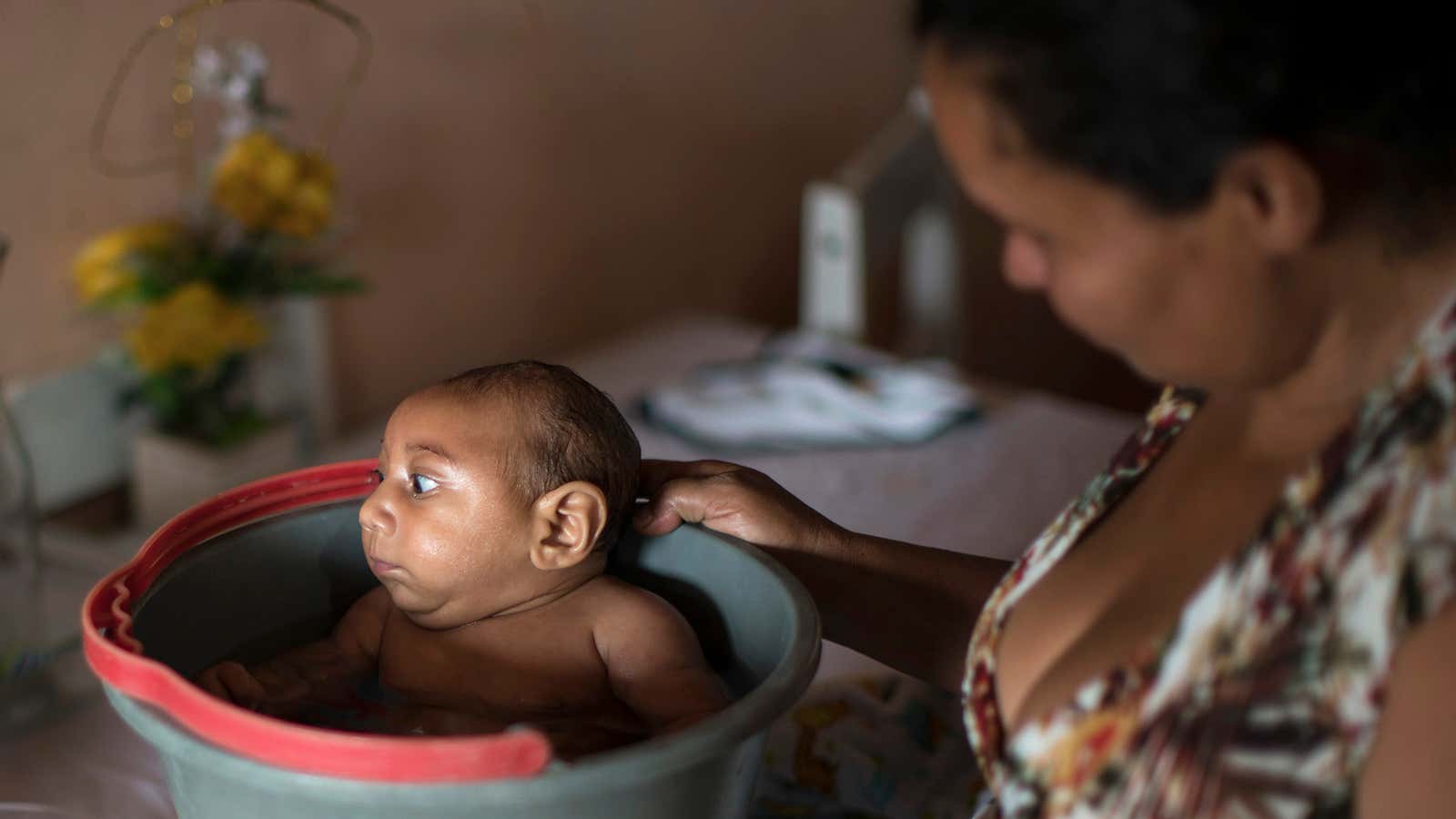The outbreak of Zika in Brazil, where it has infected more than 1.5 million people, has spread to 20 countries in Central and South America in less than six months. Though its effects on adults are mostly mild, it is Zika virus’s link to microcephaly—an incurable birth defect that causes children to be born with exceptionally small brains—that has caused the most worry.

The inability to stop this spread has led to some unprecedented advice: Health authorities in four countries are advising women not to get pregnant, if they can help it. But that advice is highly impractical in Latin America, where women have very little access to most types of family planning.
Only 52% women in the region have access to contraceptives, according to reproductive health groups.
Experts suggest that the riskiest time to catch the Zika virus is in the first trimester. In countries where abortion is available, this is well within the limit legal time limit and could cut down the number of microcephaly cases.
But abortion is completely banned in seven countries in Latin America, and it is highly restricted in most of the others. An estimated 97% women of childbearing age in the region are in countries where abortion is restricted.
These laws don’t stop women from having abortions, of course. Some 4.4 million Latin American women got an abortion in 2008, but 95% were “unsafe”—that is, they were performed illegally by people without the medical necessary skills.
About 760,000 Latin American women are hospitalized every year for complications resulting from unsafe abortions.
In countries like El Salvador, “the recommendation to postpone pregnancy is offensive to women and even more ridiculous in the context of strict abortion laws and high levels of sexual violence against girls and women,” Monica Roa of Women’s Link Worldwide, a global women’s rights group, told the Thomson Reuters Foundation.
Some countries where abortion is completely banned, such as Nicaragua and Dominican Republic, have yet to see Zika cases. But WHO predicts that the virus will spread to all countries in the Americas where its carrier Aedes aegypti mosquito is present—that includes every North and South American country except Canada and continental Chile.
In Brazil, which is dealing with more than 4,000 cases of microcephaly, fetal scans can reveal occurrence of microcephaly. This should be enough, according to the law, to warrant a legal abortion. But, in a country that imprisons many women who seek abortion and stops discussion around its medical practice, finding a legal provider in time may be nearly impossible.
It is also unlikely that countries will suddenly change legislation to accommodate a new health threat. Worse still, popular opinion in opposition to abortion is strong in the region. Surely, though, the awful photographs of children with microcephaly should spur some action for what should be a woman’s right.
